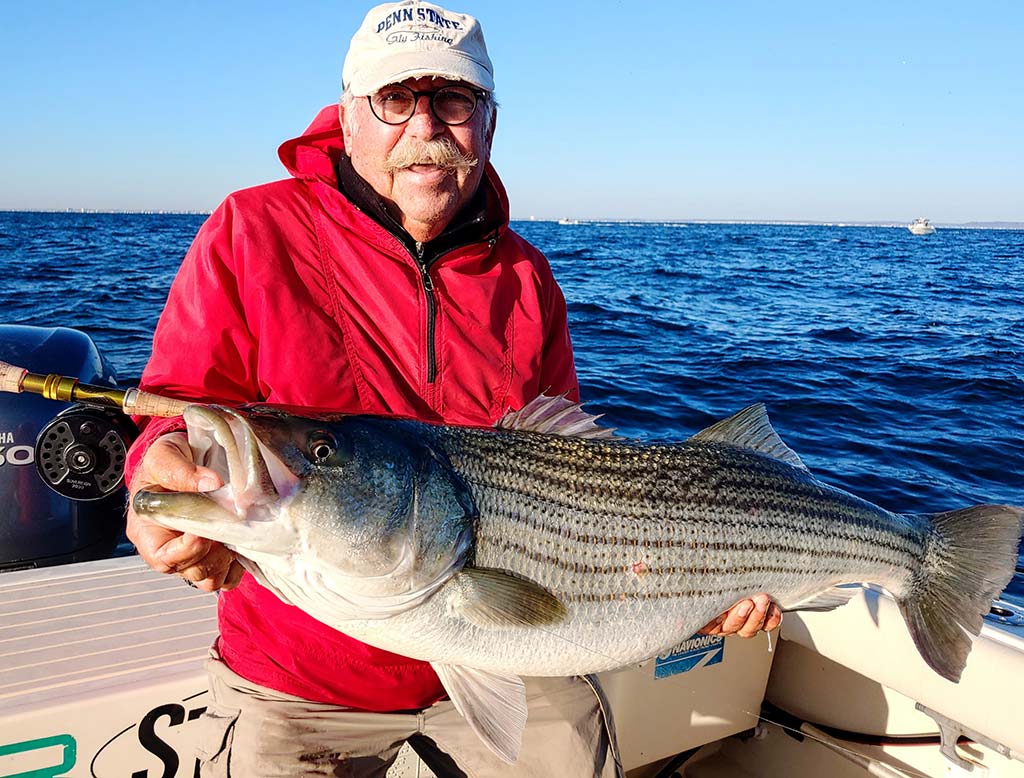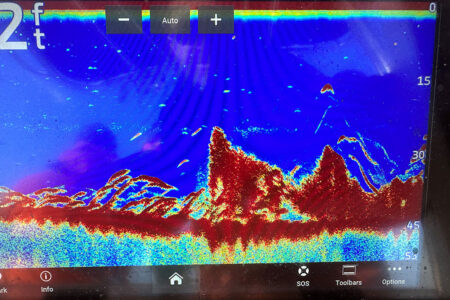
November is an exciting month for fly fishers because it’s one of easiest times of the year to catch a big bass on the fly. One primary reason is that sand eels will migrate from offshore in toward the beach. Couple this with dropping water temperatures through this month and you have the added stimulus that puts the bass on the feed.
In November, striped bass will gorge themselves in preparation for their migration to their wintering grounds. As a result, daily blitzes may become a common site if you are in the right place at the right time. When conditions are right, boat anglers have a definite advantage over surfcasters when it comes to connecting on the fly as one can quickly motor around and locate the Hitchcock-style bird action that pinpoints where the bass are pushing the sand eels to the surface. Along the beach however one must hope that sand eels will come into the surf zone and this is not always the case.
Sand eels are relatively easy to imitate with the fly and just about any long, slender, weighted fly will work. Popovics’s jiggy fleyes are my number one choice to emulate the sand eel’s slender profile and I will fish them 90% of the time. I like to fish natural sand eel colors when the water is clear. But when the water is stained chartreuse and yellow are my top choices. Clousers and half and halfs will also work well.
Since sand eels will mostly be deep in the water column fishing a sinking line will be your best bet. For a 9/10 weight rod a 300- to 400-grain line will work well. Select a fly line that has a cold-water core that will not tangle. Not tangling is an important element of your cast as more than likely your fingers will be cold at this time of year and undoing tangles can be difficult. Use your boat deck as your striping basket as this will allow your line to spread out and lay nicely in coils on top of each other which will minimizing tangles.
To fish sinking lines effectively involves a little more than just casting out, letting the line sink, and then retrieving. I employ what is referred to as “stack mending” the line. To do this cast out the sinking head completely then sweep your rod tip side to side to allow about another 25 yards of line to dump into the water. The will allow the line to sink down quickly with no resistance to a deep depth. As the boat drifts away from the line wait for it to come tight. When it does your line will not sink anymore so this is when you start your stripping. This method should get your fly down about 30 feet if there is not a very fast drift.
Your first few strips are most important and this is when many strikes will occur as your fly is at its deepest point in the water column. Your strip should be a long pull followed by a short pause. The pause will cause the fly to drop which when done in succession with your pull will impart an up and down jigging action to the fly which will draw the attention of any nearby bass.
Expect your bass to hit extremely hard so don’t be fooled into thinking that you have a solid hook-up. You will still need to impart a series of short powerful strip strikes to completely drive the hook into the hard palate of the bass. This should be done by having your rod almost horizontal as it stretches out over the gunnel of the boat. Many beginners will lose a bass as they shake their head during an ensuing fight because they fail to get the proper hook set. Crushing the barbs down on your hooks will help to deliver better penetration and will also help when removing the hook.





